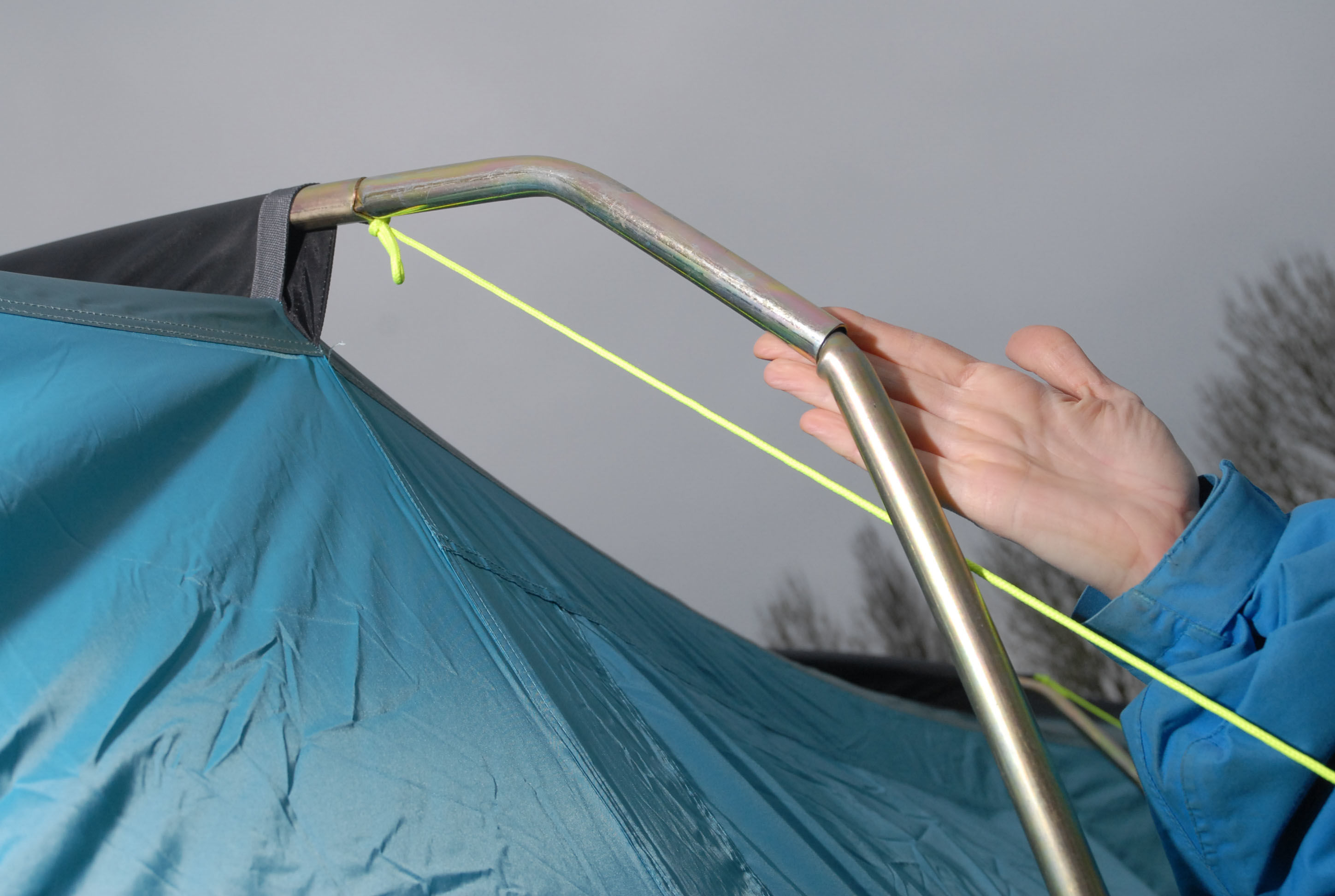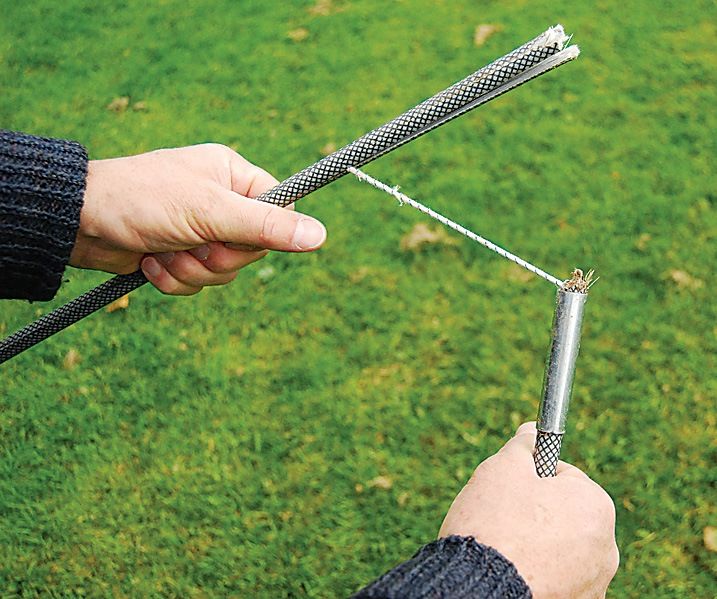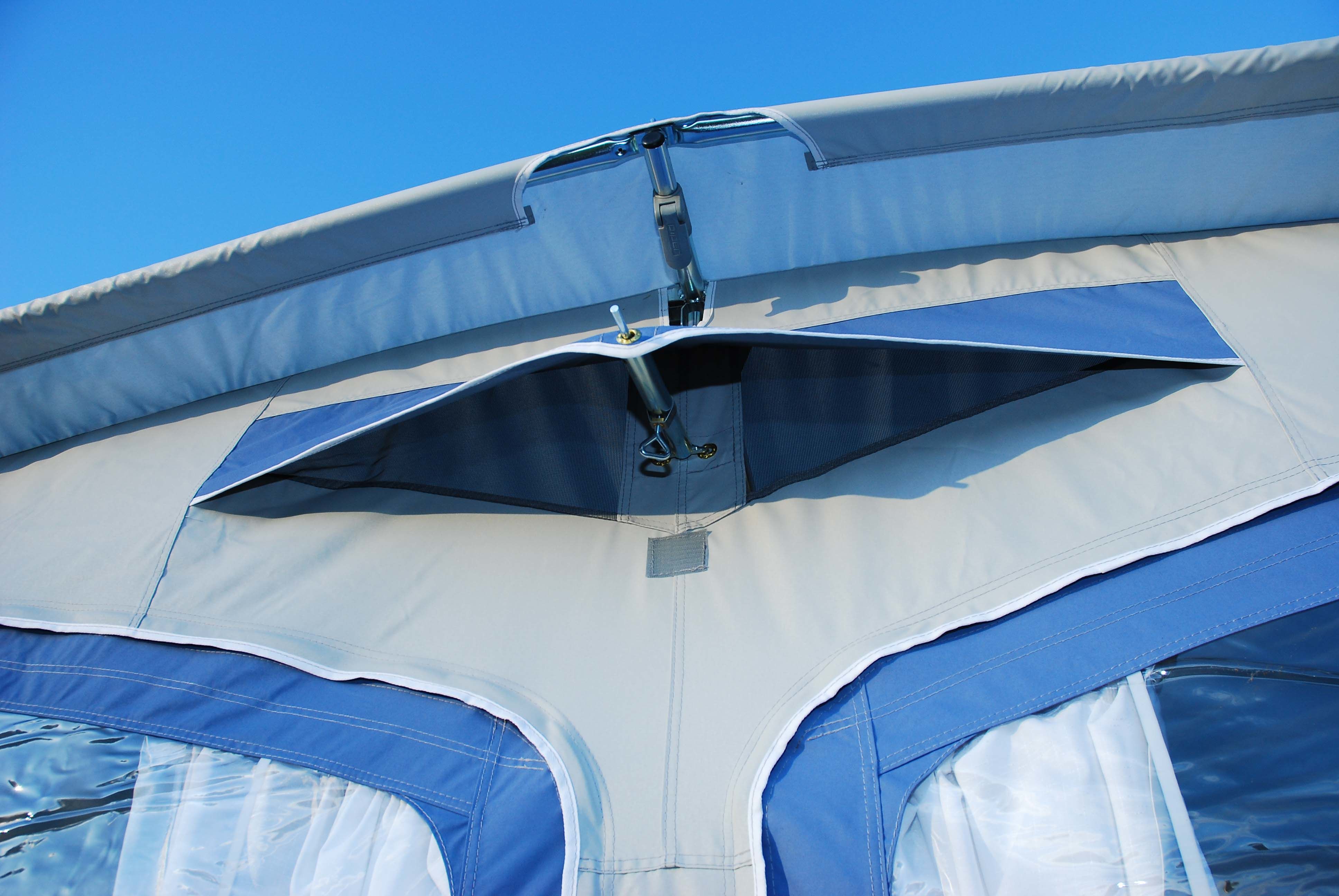Packing away

If you discover a bent pole, be sure to fix before your next trip
Here's a checklist to make sure your awning has the best chance of being in perfect condition when you next need it:
1. Check the fabric (the main fabric along with any inner tents, groundsheet, mudwalls, skirts and wheel covers) to make sure it's clean and dry then clean, repair and reproof if necessary.
2. Inspect the poles, cleaning and repairing them as required. Check the ends, any connecting cords, spring links and other attachments to make sure they are not damaged. If you need to re-thread an elastic cord, a Bulldog clip can be useful to secure the cord to stop it springing back. Store the poles in a separate bag
to prevent them damaging the fabric of your awning.

3. Clean and count the pegs. If you need to straighten any you can try holding them in a vice and tapping them with a hammer (metal pegs only). If any are missing, consider replacing them with some different types of pegs to suit different ground conditions. Store the pegs in a separate bag to prevent them damaging the fabric of your awning.
4. Check the connecting points around the awning, including pegging points and guy lines.

5. Make sure the pads or suckers that protect the side of your caravan or motorhome are in good condition and replace them if they are not.
6. Look over all the seams and reseal if necessary.
7. Inspect any windows, vents, flyscreens and other items for damage.
8. Try the zips. Use a lubricant (a proprietary spray or candle wax) on any that don't run freely.
9. Avoid folding the awning the same way every time to prevent wear along the folds.
10. Store your awning in a cool dry place out of direct sunlight. Don't keep it in a plastic bag or you may have a problem with condensation.
Your awning is probably most vulnerable when you are pitching it and taking it down again. Poles, for example, can bend, fracture or break if they are over stressed when you thread them into their sleeves. If they are really sticking try using a little silicone furniture polish. Avoid oil or grease as it can damage the fabric.
Always push a pole into its sleeve carefully so you don't tear the fabric. Avoid pulling sectional poles as the parts will often separate and can catch easily.
If a pole breaks, gaffer tape or the more traditional lashing with string (search for 'lashings' on scoutbase.org.uk for more information) can provide a temporary repair in the field, but it's worth buying a new section or complete pole as soon as possible. Outdoor retailers generally carry a selection of poles that can be cut to size to replace a broken part or the dealer who sold you the awning should be able to help. Ideally take the broken pole with you to the store to find a good match. If this isn't practical, make a note of the material it's made of (GRP, aluminium alloy or steel), its diameter and the length you need before you visit.
Alternatively you can contact a specialist spares company to see whether it stocks poles for your awning model.
Inflatable Poles
Inflatable frames are generally maintenance free and easy to setup. The one thing you may experience is a puncture in one of these tubes. For some types where tubes can be isolated it is a minor inconvenience and may be able to be left for repair when you get home. For the type where the tubes are either interlinked or form large sections it may mean the awning can no longer be used until a repair has been performed.
The puncture may be from a sharp object piercing the protective sleeves and air bladder or more likely due to overinflation. Always use the approved pump to inflate to the specified pressure. You may need to drop the pressure if the ambient temperature rises, for example when pitching in the evening and the following day is particularly hot. Most air awnings are more reliant on volume to support the fabric so reducing the pressure a bit should not cause any major issue. This is particularly relevant for those travelling to warmer European destinations. Its worth noting some makes of inflatable awnings have built-in pressure relief which should avoid this situation, check your instructions.
Repair may be possible in most cases, but never remove the tube from its sleeve until it is completely deflated as it will likely burst. Use products recommended by the awning maker, they may have a repair kit available or have some Tear Aid or Storm Sure to hand. For a temporary repair gaffer tape may slow a leak down to a manageable level until it can be repaired or replaced. In some rare situations the whole tube may need replacing. There are a number of retailers that can provide suitable replacements, Check out the Contact list on this Data Sheet.
When reinstalling a bladder and to avoid the zip pinching it when zipping into the protective sleeve, put your fingers under the slider as you pull the zip up. Resecure the end of the zip to avoid accidently opening.
Ideally fold the awning in different ways to avoid repeatedly fatiguing the air poles in the same position. Work any trapped air out of the outlet/s while folding the awning can help while putting it back in the bag also.
 Beware the bubble!
Beware the bubble!
Don't let children blow bubbles too close to your awning. The detergent in the liquid can affect the proofing, as can any soap, oil or grease.
Fabric
The fabric of your awning can be damaged by many things, from the acid of bird droppings to the ultraviolet light of the sun, mildew in storage to a tear from a misplaced pole. If the fabric tears you can patch it simply by using a suitable adhesive to stick on a piece of matching fabric. For a more permanent repair, stitch the patch in place but remember to seal the stitching holes with an appropriate sealant. There are companies that provide a repair service but since awnings are generally quite heavy to send in the post, it's worth asking at your local camping store or searching online to find a local repairer to avoid transport costs.